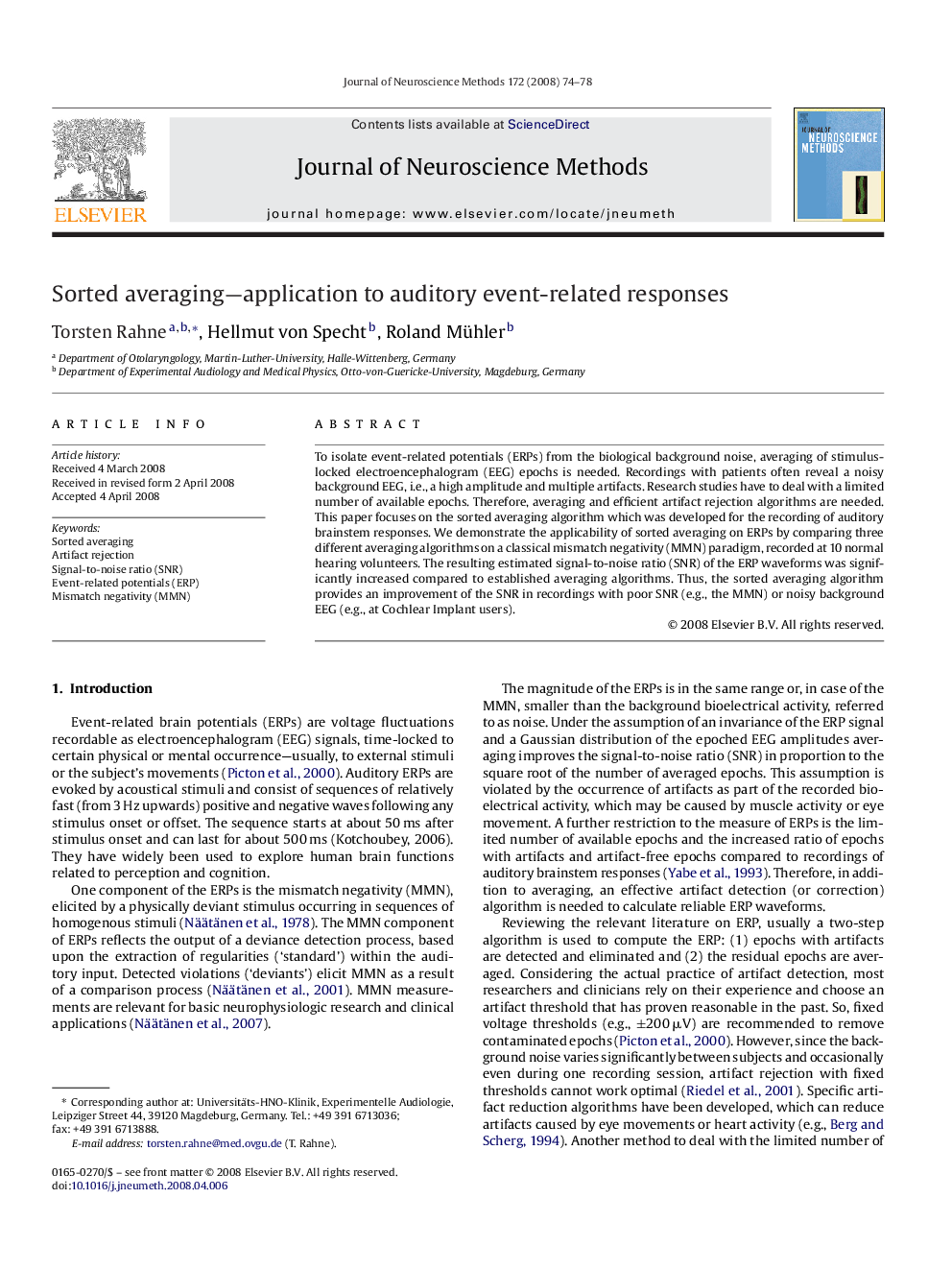| Article ID | Journal | Published Year | Pages | File Type |
|---|---|---|---|---|
| 4336038 | Journal of Neuroscience Methods | 2008 | 5 Pages |
Abstract
To isolate event-related potentials (ERPs) from the biological background noise, averaging of stimulus-locked electroencephalogram (EEG) epochs is needed. Recordings with patients often reveal a noisy background EEG, i.e., a high amplitude and multiple artifacts. Research studies have to deal with a limited number of available epochs. Therefore, averaging and efficient artifact rejection algorithms are needed. This paper focuses on the sorted averaging algorithm which was developed for the recording of auditory brainstem responses. We demonstrate the applicability of sorted averaging on ERPs by comparing three different averaging algorithms on a classical mismatch negativity (MMN) paradigm, recorded at 10 normal hearing volunteers. The resulting estimated signal-to-noise ratio (SNR) of the ERP waveforms was significantly increased compared to established averaging algorithms. Thus, the sorted averaging algorithm provides an improvement of the SNR in recordings with poor SNR (e.g., the MMN) or noisy background EEG (e.g., at Cochlear Implant users).
Keywords
Related Topics
Life Sciences
Neuroscience
Neuroscience (General)
Authors
Torsten Rahne, Hellmut von Specht, Roland Mühler,
